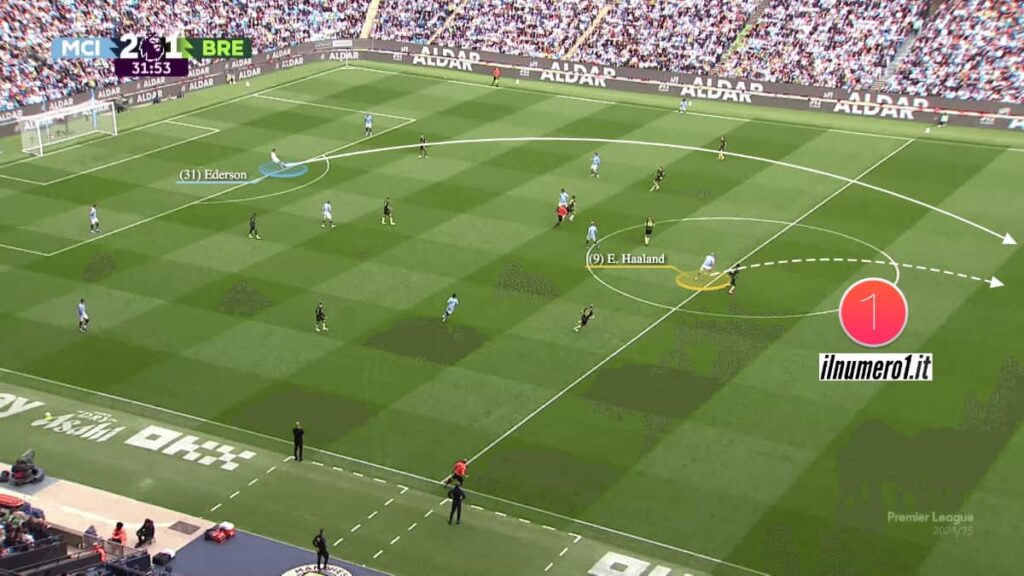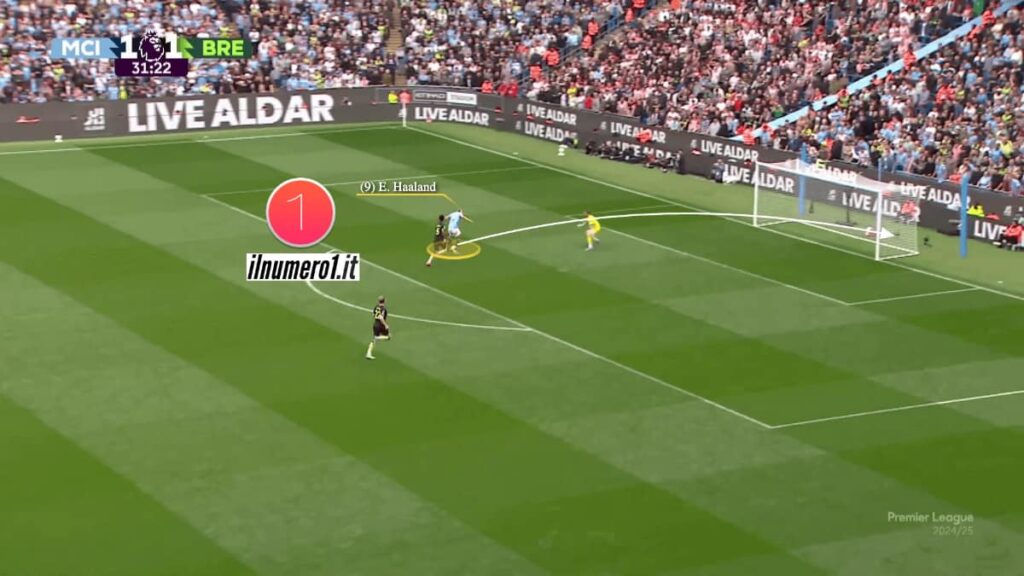The analysis of the evolution of long passes in football, based on an in-depth article published by The Athletic about the Premier League. The article explores tactical changes in the game, highlighting the decreasing frequency of long balls played by goalkeepers in favor of building play from the back.
In recent years, the tactical evolution of football has profoundly transformed the approach of teams, setting a new standard of play centered around building from the back. This style, characterized by short, intricate passes initiated from the defense, marks a clear departure from the traditional reliance on long balls. In the past, teams employing a possession-based approach were considered an exception. Today, the situation has completely reversed: it is now the teams favoring a direct approach that stand out as exceptions.
In this context, short passes from the defense and the goalkeeper’s involvement in the build-up have become the norm. The role of the goalkeeper has undergone a radical transformation. Previously, it was largely limited to long clearances (and despite the decline, goalkeepers remain the players with the most long passes on the field). However, the introduction of the back-pass rule in 1992 and the influence of Guardiola’s Barcelona have driven a significant shift.
Today, the goalkeeper is an integral part of playmaking, taking on specific responsibilities in ball distribution and seamlessly integrating into the team’s collective strategy.
Percentage of long passes by Premier League goalkeepers
Since the beginning of the 2018-19 season, the Premier League has seen a significant shift in the playing style of goalkeepers. Specifically, the percentage of long passes—defined as passes of at least 32 meters—has dropped from 69% to 45% over six years. This trend aligns with the tactical evolution of the league, coinciding with the influence of managers like Pep Guardiola, who began his tenure at Manchester City just two seasons earlier.
Technical goalkeepers and high pressing: the return of the long ball
It is no coincidence that high pressing represents the most coherent tactical evolution, capitalizing on proximity to the goal to regain possession in a highly favorable area of the field. In this scenario, recovering from a mistake becomes more difficult, leading to the need to minimize the margin for error. Consequently, the specific training of goalkeepers has changed: it no longer focuses solely on simple long kicks but emphasizes precise control and passing with both feet. This method of practicing footwork reduces the risk of errors, expands the range of available solutions, and enables better decision-making during matches.
On the other hand, head coaches, aiming to solidify build-up play from the back and counteract such pressure effectively, actively involve goalkeepers in small-sided drills. Additionally, they work to refine strategies designed to bypass defensive countermeasures, creating bait scenarios to draw opponents in and push the defensive line toward midfield.
In this context, some managers have rediscovered the long pass as a winning solution, despite data indicating its progressive decline. The intensification of aggressive pressing and the higher defensive lines make the long pass a valuable tactical weapon when used with precision and clear intent. Teams leverage their goalkeepers to isolate physically dominant forwards against rival defenders, forcing opponents into complex decisions. This strategy has been successfully applied by Pep Guardiola’s Manchester City, utilizing Ederson to deliver long balls to Erling Haaland, effectively exploiting the space created by man-to-man pressing.

“When you isolate Haaland against a central defender, with the quality that we have with Ederson and (backup goalkeeper) Stefan Ortega, it’s a weapon that we have to exploit,” said Guardiola after City’s 2-1 victory that day.


It is not the first time that City has utilized Ederson’s long passes to a forward to bypass man-marking pressing systems. Considering the characteristics and profiles of these two players, it is a winning solution.
Other practical examples
Similarly, Liverpool employs long passes from their goalkeepers to trigger quick combinations and triangulations on the wings, with Mohamed Salah as the focal point.

Salah has received 42 per cent of Liverpool goalkeepers’ completed long passes in the Premier League this season, a stark increase compared to the previous six campaigns.
Arsenal adopts a similar approach with David Raya, directing most of his long passes toward Kai Havertz, which frees up key areas of the field and increases their chances of scoring. In other instances, this strategy proves less effective: Erik ten Hag’s Manchester United struggles to capitalize on Andre Onana’s long passes aimed at Diogo Dalot, highlighting that such moves require technical skills from both players, complex synchronization, and precise spatial awareness. When executed successfully, however, the results are evident.

The use of long passes is no longer merely an attempt to “clear the ball” but rather part of a structured and flexible attacking plan designed to bypass pressing and advance play into dangerous areas. While the numbers show a quantitative decline in such passes, their tactical significance is on the rise, particularly among teams led by managers known for favoring a style of play that traditionally avoids long balls.